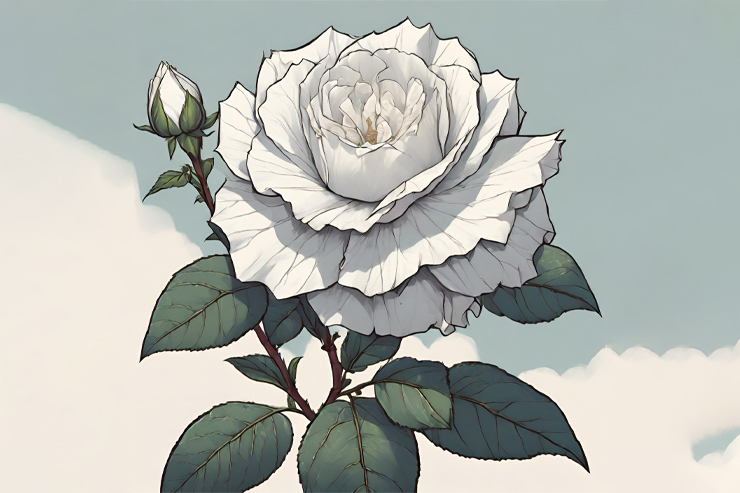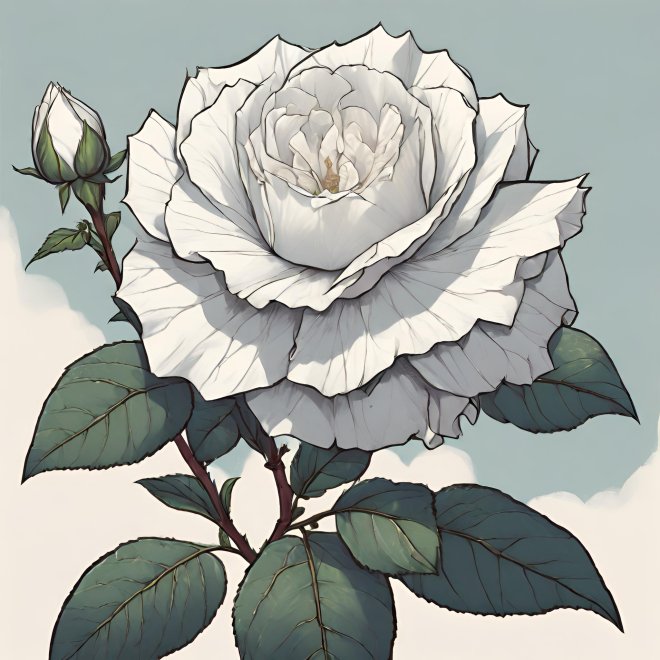
The history of rose gardens in America is a tale woven with the threads of tradition, passion, and the enduring allure of one of nature’s most iconic symbols—the rose. From early colonial days to the present, the cultivation of roses has been a labor of love, shaping the landscape and reflecting the cultural tapestry of the nation. In this exploration, we will trace the roots of rose gardens in America, uncovering the influences that have shaped their evolution, and celebrate the enduring legacy of these fragrant blooms.

Colonial Roots: Roses in Early America
The story of rose gardens in America begins with the arrival of European settlers who brought with them not only the desire to cultivate the land but also the cherished tradition of gardening. The first colonial gardens, rooted in practicality and sustenance, gradually transformed into spaces that reflected the aesthetics of the Old World. Roses, with their timeless beauty and symbolic significance, found a natural place in these evolving landscapes.
In the early 17th century, colonists introduced European roses to the New World. Among the first varieties cultivated were the Alba, Damask, and Gallica roses, each cherished for their unique characteristics and historical associations. Gardens in colonial America, often adjacent to the homes of the well-to-do, featured these early rose varieties, serving both ornamental and utilitarian purposes. Roses were not only admired for their beauty but also valued for their medicinal properties and fragrance.
19th Century: The Rise of the Victorian Rose Garden
As America moved into the 19th century, the Victorian era brought about a profound shift in gardening aesthetics. The prevailing sentimentality and love for symbolism found expression in the design and cultivation of gardens. This period witnessed the rise of the formal rose garden, characterized by geometric layouts, intricate pathways, and carefully curated collections of roses.
Victorian gardeners, inspired by English traditions, began to cultivate a diverse array of rose varieties. The Hybrid Perpetuals, Tea Roses, and Bourbon Roses gained popularity during this era. Elaborate rose gardens adorned the estates of the affluent, becoming a status symbol and a reflection of refined taste. The fascination with “bedding out” became a trend, where roses were planted in intricate patterns, creating a riot of color and form.
Notable Victorian-era rosarians, such as Antoine A. Jacques and Jean-Baptiste Guillot, contributed to the popularity of specific rose varieties in America. The beloved ‘La France’ rose, introduced in 1867, marked the advent of Hybrid Teas, a class of roses that would later dominate the 20th-century rose landscape.
Early 20th Century: The Golden Age of American Rose Gardens
The early decades of the 20th century witnessed the Golden Age of American rose gardens. The emergence of influential rosarians, advancements in rose breeding, and the increased accessibility of roses to the general public fueled a nationwide fascination with these blooms. The American Rose Society, founded in 1892, played a pivotal role in promoting the cultivation and appreciation of roses.
Rosarians like Jackson & Perkins and Conard & Jones became household names, introducing groundbreaking rose varieties and popularizing the concept of “own root” roses, making cultivation more accessible to amateur gardeners. The development of disease-resistant varieties, such as the famous ‘Peace’ rose introduced in 1945, further fueled the popularity of roses in American gardens.
Public rose gardens also began to take root across the nation. Notable among them is the Portland International Rose Test Garden, established in 1917, which has since become a sanctuary for rose enthusiasts and a testing ground for new rose varieties. Cities like Portland, Oregon, and Tyler, Texas, proudly embraced the title of “Rose City” and “Rose Capital,” respectively, showcasing their dedication to these blooming beauties.
Mid-20th Century to Present: A Changing Landscape
The mid-20th century marked a shift in gardening preferences and lifestyles. Post-World War II suburbanization brought about smaller yards and a desire for low-maintenance landscapes. Hybrid Teas, which had dominated the rose scene for decades, faced competition from the rise of Floribundas and shrub roses.
The 1960s and 1970s saw a resurgence of interest in antique and heirloom roses. Gardeners sought out varieties with historical significance, contributing to the preservation of old garden roses that might otherwise have been lost. This movement aligned with a broader societal shift towards environmental consciousness and a desire for sustainable gardening practices.
In recent decades, the availability of roses has expanded with the rise of online commerce and specialty nurseries. Gardeners now have access to a vast array of rose varieties, including modern hybrids, antique roses, and species roses. The resurgence of interest in organic and sustainable gardening practices has also influenced rose cultivation, with many enthusiasts adopting natural approaches to pest control and soil enrichment.
Regional Influences: Diverse Rose Gardens Across America
The geography and climate of the United States have given rise to a diverse array of regional rose gardens. The Pacific Northwest, with its mild and wet climate, provides an ideal environment for the cultivation of roses. The Portland International Rose Test Garden, with its stunning views of Mount Hood, showcases an extensive collection of rose varieties and serves as a testing ground for new introductions.
In the South, with its warm and humid climate, rose gardens display the charm of old garden roses and climbers that thrive in these conditions. The Tyler Rose Garden in Texas, boasting over 38,000 rose bushes, stands as a testament to the region’s love affair with these blossoms.
The Midwest, with its varied climate, supports a mix of hardy shrub roses and modern hybrids. The Chicago Botanic Garden, home to the renowned Buehler Enabling Garden, offers a showcase of accessible gardening practices, including raised beds and adaptive tools for gardeners with physical challenges.
In the arid landscapes of the West, gardeners embrace water-wise landscaping, and roses that can thrive in drier conditions take center stage. The Denver Rose Society’s Educational Rose Garden is an excellent example of roses flourishing in a semi-arid environment.
Cultivating the Future of American Rose Gardens
As we traverse the vast and storied history of rose gardens in America, we witness a journey that transcends mere horticulture. The cultivation of roses has mirrored the shifting landscapes of American life, reflecting societal trends, cultural shifts, and evolving aesthetics. From the colonial gardens rooted in necessity to the Victorian-era grandeur and the 20th-century democratization of rose cultivation, the rose has been a constant companion in the nation’s gardens.
Today, as we stand on the precipice of a new era, the future of American rose gardens beckons. The resurgence of interest in sustainable and organic gardening, coupled with a continued fascination with heirloom varieties, suggests that the story of roses in America is far from over. As we cultivate our gardens, we participate in a living history—a continuation of a tradition that has spanned centuries and connected generations.
In the hands of modern rosarians, both amateur and professional, the legacy of rose gardens in America continues to blossom. With each new variety introduced, each garden tended, and each blossom admired, we contribute to a narrative that celebrates the enduring beauty of the rose—a flower that has, and will, stand the test of time in the hearts of American gardeners.



